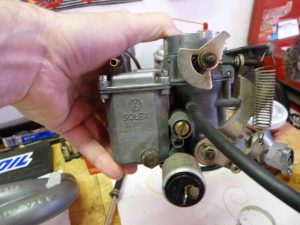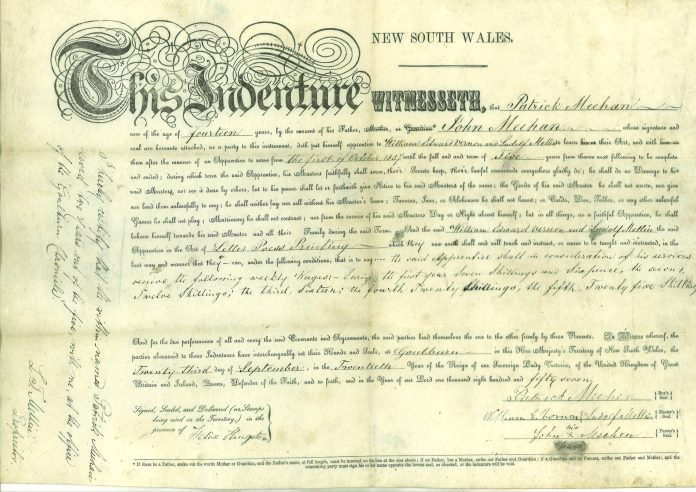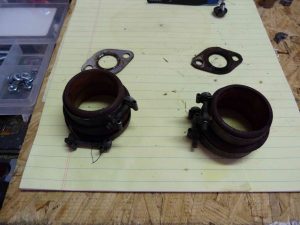The more I work on the ’72 Beetle – aka Sexual Chocolate, the car I am helping my teenage protege learn to work on – the more I realize why most teenagers have lost interest in cars.
It’s the money, mostly.
The Beetle is not just easy to work on, it is very cheap to work on. This matters to teenagers, usually. Which is why cars like the Beetle were so appealing to teenagers – and young people generally.
A car is no longer fun when you are indentured to it. When it is constantly bleeding you of sums you’d rather spend on other things.
Or sums you simply haven’t got.
A car like the Beetle is not an indenture contract on wheels.
Even now – 2018, almost 40 years since the last new old Beetle was sold in the United States – you can still buy a solid one for around $3,000 or so. My protege’s ’72 Super Beetle cost about that.
For that sum, he got a viable and fun car he can deal with. Sound body – good floorpans, no welding to do – and a mechanically healthy drivetrain whose operations he can fathom.
There was some jerry-rigging to undo/correct, such as a huge vacuum leak as a result of the “modifications” performed by the previous owner – but this was fixable as opposed to replaceable.
It’s an important distinction.

Hands tools, sweat equity.
Not money.
Not much money, anyhow.
The Beetle’s intake – the center section – is made of cast iron, which can be welded if it is damaged. You cannot weld a plastic intake manifold – which most new cars have. If a plastic manifold cracks, you have to replace it. This generally costs a couple hundred bucks, which is a sum most teenagers do not possess.
The Beetle’s manifold was fixed for . . . nothing.
Well, some welding wire and 10 minutes of work. That plus $10 for a set of new boots (to connect the aluminum end pieces) and a pair of gaskets to connect the works to the engine. The physical installation involved tightening one 13 mm bolt to hold the center section in place and four more 13 mm bolts (two on each end) to secure the end pieces. That plus tightening the clamps that hold the boots which connect the center section to the end pieces constitutes the entirely of rehabbing and installing the entire intake system.
Add two more 13 mm bolts if you need to remove the carburetor.
The whole thing – everything – can be removed and re-installed in half an hour with a 13 mm wrench and a flat bade screwdriver.
By the side of the road, if need be. At night. In the rain. By a teenager.
This is appealing – in addition to being cheap.
Thanks to Uncle, the cars available today and recently are not. Which makes them much less appealing, especially to the young – who usually lack both money and tools.
You may have heard of the Hierarchy of Needs. It is a pyramid of things human beings need in order to feel like human beings. At the base of the pyramid is simple physical safety. At the apex is self-actualization, which comes into being as the result – in part – of competence and mastery.
It used to be the case that a kid acquired those things by mastering his first car. Not just learning to drive it but to fix it. The little things first. Spark plugs, fan belts. But by the summer you graduated from high school, you might be an old hand at pulling an engine or putting in a clutch. You definitely knew how to change a tire – unlike the teenager in this makes-your-teeth-ache video:
The cars coming off the line today are undoubtedly technological miracles – magical, almost, in terms of the things they can do. But they are also remote, forbidding things from which we are profoundly alienated – because we do not understand their workings, cannot deal with them. They take us where we need to go, in great comfort and rarely causing us trouble. But when trouble does arise, we are helpless as H.G. Wells’ fictional Elio. We call for help, someone comes – just like the kid in the video above.
The Beetle, on the other hand . . .
I showed my protege how to solve the problem of the Solex 34 carburetor’s accelerator pump linkage not quite clearing the alternator that had been installed by the prior owner, in place of the factory-installed generator. It was a simple matter of reversing the cam/rod such that their free movement was not impeded by the alternator’s larger-diameter housing. Right as the rain; good as new. Such field expedient solutions are generally not possible with modern cars. Even fiddling with the ignition timing to other than exactly factory specifications can result in OBD (On Board Diagnostics) code contretemps and “check engine” light syncopations.
Besides which you often need a scan tool to adjust a modern car’s timing. To do this job to the Beetle requires . . . a 13 mmm wrench (to loosen the distributor hold down clamp) and a simple – and cheap – timing gun. About $40 vs. a lot more than that. And you can adjust the Beetle’s (and any other pre-computer car’s) timing in whatever direction you like – as much as you like.
Play with it – see how much the engine likes or doesn’t.
Same goes for the idle speed. Turn a screw in – or out. Tune the engine by ear and by feel. Want a snappier throttle? Install a lighter return spring. More – or less – choke duration is a matter of tension. Fiddle with the adjuster screws until it seems right. And when you get it just right – savor the flavor!
It’s a tactile experience – the difference between stroking the fur of a real tiger and watching a YouTube video about tigers.
My Beetle – the ’73 I used to own, when I was not much older than my protege is now – once suffered an engine fire, the result a fuel belch from the carburetor. This was a fairly common Beetle occurrence and part of the Ownership Experience – like the cable and ductwork “heat” system, which kept you just warm enough in winter to avoid frostbite but not too much worried about it because of the happy brain fog that came from mild carbon monoxide poisoning.
Anyhow, the Beetle backfired through the Solex carb and an auto da fe ensued. Luckily, I had a shovel close by and was able to pitch clods of dirt at the engine, which snuffed the flames.
But not before they consumed the wiring harness.
This would be fatal to a modern car. But a Beetle’s wiring harness amounts to a handful of wires – no sensors or computers connected to them. If you can get 12 volts from the battery to the starter, distributor and alternator – and you can rig this almost any way you like – the engine will run.
That plus removing the carb, turning it upside down and shaking out the dirt clods. The car needed a new fan belt, too. But otherwise, good to go.
Once, I was driving along and all of a sudden the engine just . . . died. I popped the lid and immediately saw the reason why. The Solex 34 has a dime-sized plug on the backside of the casting. Mine had popped out and the gaping hole – and attendant vacuum – leak made it impossible to restart the engine.
Luckily, I had a dime.
It fit the hole in the Beetle’s carb almost perfectly. I used the tire iron to press-fit it in place. Dab some RTV – room temperature vulcanizing – rubber sealant around the edges. Give it 10 minutes to cure. Back on the road, good as new. The carb still had the dime-plugged hole when I sold the car several years later – for about the same sum I had paid for it a few years prior.
The car took me places, gave me adventures. It made me me sometimes, but never made me feel helpless.
Or broke.
I suspect that the fact such cars are no longer made and have not been for going on a generation largely accounts for the increasing alienation of the current generation from cars. Perhaps indifference is the better word. One uses a smartphone but rarely becomes attached to it.
It is merely a disposable thing, one much like another and useful a long as it is . . . useful. There is no affection, no sense of horse and rider – your horse a special horse, unlike anyone else’s horse. Made special by its quirks and the random breakdowns and the things you engineered on the spot to get back on the road again.
That is Sexual Chocolate – the name given by my protege to his Beetle. Which became his not on the day he bought it but on the day he first began to work on it. And discovered that he could – and that it was good.
. . .
Got a question about cars – or anything else? Click on the “ask Eric” link and send ’em in!
If you like what you’ve found here, please consider supporting EPautos.
We depend on you to keep the wheels turning!
Our donate button is here.
If you prefer not to use PayPal, our mailing address is:
EPautos
721 Hummingbird Lane SE
Copper Hill, VA 24079
PS: EPautos magnets – they’re back! are free to those who send in $20 or more to support the site. Also, the eBook – free! – is available. Click here. Just enter you email in the box on the top of the main page and we’ll email you a copy instantly!














Excellent article, Eric. It reminds me why the one ride I will never give up is the 1958 F-100. Other than radial tires, conversion to an alternator, halogen headlights on relays and an old school Smithy muffler, it’s not much different than it was when it left Dearborn. The old 223 gets grumpy about starting when the mercury gets below 40F, and it rides like a 60 year old truck but I can literally repair anything that goes wrong with it myself, most of the time for less than 20 bucks.
Thanks, El Guapo!
I am having a ball working on the Bug; don’t tell the kid!
Eric, looks like you’re having a ball driving that Bug, too!
https://images.complex.com/complex/image/upload/c_limit,w_680/fl_lossy,pg_1,q_auto/pkjnccocldglm8rftlme.jpg
The West has successfully been transformed into a dumbed down frustrated metrosexual culture of permanent play adult children. They can’t wait to spend $1,000 on Apple’s latest battery powered color game play pocket telephone, but change a tire? Eew!
Just like eggs. They don’t come from (Eew!) chickens, they come from the store.
Hi Torino,
Yes, exactly!
The fascination with gadgets dovetails nicely with the sudden push for automated cars. The Eloi will welcome them because they are the ne plus ultra of the former.
RE: Maslow.
Uncle’s people never seem to get past the lower sections of the hierarchy, food and safety. It seems Uncle-infested capitalism is able to provide more than enough food, albeit of minimal quality. Safety from Uncle is more a problem for some people these days, but perception is that somehow Uncle’s actions are the reason we’re all so safe and so therefore misplaced credit is given.
Despite all attempts, belonging still is a tough nut for Uncle to crack. It’s OK to belong for some, but not others, at least if you have disagreements with Uncle’s plan. Esteem seems to be one that Uncle hit out of the park -never before have I seen so many so proud of so little accomplished. But then again, esteem is fleeting. As soon as someone utters a disparaging word the proud wilt or lash out, not understanding that wide social acceptance is fleeting and usually unnecessary for esteem.
Finally we come to self-actualization. As the page I’m using for reference states: “Only self-actualization is a need that we seek for solely positive reasons.” Since Uncle is by definition a negative force, there’s nothing to provide. Sure, Uncle can make an attempt by greasing the skids for some who would succeed anyway, but if Uncle’s magic wand were truly effective we’d all be doing what we want, not what we need to do to meet the other 4 needs. Of course even though Uncle usually fails at the other, we’re led to believe that somehow, some way, if we just believe in the next guy that comes along to remove our treasure, self-actualization is just over the horizon for everyone.
This posting brings back memories, some even pleasant. My first real car was a 7-year-old 1967 Ford Anglia. It was bought primarily for its low purchase price ($75), and for its simple, easily fixed mechanicals. We towed it back home behind a 1963 Dodge Dart, another simple, easily understood beast. The Anglia, at that time, was an “orphan car”, meaning the local Ford dealer in my part of the Colonies disavowed any knowledge of replacement parts for the little thing. Ownership of an “orphan” like a 124E Anglia meant its owner must of necessity use creative means to acquire parts, and learn the strange and wonderful ways of LBC’s (Little British Cars). Lord Lucas, the Lord of Darkness, no fuses anywhere in the wiring harness, positive earth, the wonders of natural rubber Girling brake seals, Armstrong lever action dampers, bonnet, nave plates, spanners…:-) When my high school textbooks slid off the rear seat to the floor, they often imbibed a quantity of Eau de Wagner, leaked from the clutch or brake MC on the firewall, conducted from thence under the driver’s seat by the carpets. I did learn how to strip and re-seal Girling hydraulics, got to where I could reseal a wheel cylinder in less than 5 minutes. Eventually added a Toyota fuse panel (after a wiring harness near-meltdown), a Honda alternator with an AMC (Motorola) regulator, a Fiat 850 Weber 2-barrel carb, engine overhaul and transmission re-seal…drove the car for 7 years, and some 75K miles, all the way to my first posting in the military. It never left me that I could not fix it on the spot and get going again, though it DID leave me stopped with the bonnet up at least once every 2-3 months, at least at first. I slowly made it more reliable through careful preventative maintenance, and that in itself is a powerful lesson for a young fellow, one that is really not available to any extent any more with modern autos.
Oh, and when I finally got enough time and money later on (MUCH later on), I found a 1967 MGB, and am still enjoying its company to this day. LBC’s get under your skin and into your blood.
As the article I wrote here about a trip to the salvage yard a PA6-GF (plastic) intake manifold can be had for about $20*. As a teenager I had $20 but not a welder. The plastic manifolds have a lower price at the self serve yards because they don’t have the scrap value that metal ones do. Anyway anything that required welding was a no-go for me when I was teenager.
*I had found and purchased a rare Ford service intake manifold for the NPI 4.6L V8. Probably about as high value as these things can get. At the time dealers who still had one on the shelf wanted over $500 as I recall.
“…H.G. Wells’ fictional Elio…”
I think that should actually be the “Eloi”. (Whatever happened to the Elio?)
I have yet to see an Elio in Real Life, but I did see another 3-wheeled motorcycle/convertible thing. I think it was this: https://www.geeky-gadgets.com/all-new-polaris-slingshot-3-wheel-car-launches-for-20000-30-07-2014/
Not enclosed or cheap like the Elio, but at least in my flyover state, they haven’t yet outlawed the concept.
Got an e from Elio last week. Cars have changed some and now you can make it as pricey as you like but still get the basic car. The pics they send though are depressing as in their paint jobs. Why not put some paint that will pop on them? People may not want all the bobbles and bangles but a nice paint job shouldn’t be a deal breaker. Ok, I’ll spend a $100 more for some good glitter and shiny paint. Paint my be the only thing I like about ALL new cars. Pickups even have really great looking paint. What’s the matter with that?
What’s the matter with it? Cost. Not so much materials cost, or per-vehicle cost, but logistics and production tool-up costs.
Don’t know about the quality of the specific paints they’d chosen- good or bad- but I recall part of their proposed production setup was only seven colors and two basic build options on the line (manual, or computer-automated manual) in order to keep cost (and so price) down. If they ever make it without significant change to their production engineering or marked increase in sale price, it’s unlikely they’ll offer additional paint (or trim that can’t be installed afterwards). It would significantly up costs in supply for production alone. (There were some grumblings when they upped the proposed price from $6800 to $7450 a while back, but it only barely exceeded adjustment for inflation from when they first proposed $6800 to the time of the increase, so I wasn’t too shocked by that alone. People forget how long ago it was they first showed their now-deprecated initial mules.)
They’ve already had protracted trouble acquiring significant capital for a tool-up to production, enough so that even their projected launch date is currently 2019, and that’s with the assumption that Louisiana doesn’t try to fine them again under the claim that they’re an unlicensed dealership, that financing timetables don’t slip, etc. I like their conceptual vehicle and production engineering- what’s been shared- but the odds are always against an automotive startup, if only due to the initial capital required, nevermind regulatory compliance and local political maneuvering, *nevermind* the political show only recently just started over their plans to forgo a dealer network for direct sales. In light of those odds and capital requirements, I’d wager they’re unwilling to entertain any other build options- including paints- that up their production costs until all of that has been dealt with, until they can show steady sales of more basic, low-cost units.
I wouldn’t hold my breath for additional paint options unless they manage a launch and a year or two of decent production and sales, with a fair bit of work between here and there.
And for what it’s worth, the pictures they use lately tend to be either images of their E1C design (mostly-current chasis/unibody design, mostly-current body panels, current powertrain, black paint) or CAD renders, with the renders *sometimes* showing a rear-mounted battery and a reroute of the exhaust under the body to a rear exit instead of the side/sponson conformal config on the E1C.
All that in mind, I’m not putting any money on it, but theirs is about the only new vehicle design I’m particularly interested in at the moment, and I hope they can pull it off. Everything else new either seems bland to me, or is far enough out of my responsible price/operating cost range to justify seriously considering. Elio’s design looks like an appliance, but a potentially frugal and strangely interesting appliance, if that makes any sense.
I get what you say and realize new paint would be a cost but what they have now is paint that doesn’t really shine. I’m not sure why it is. Soft paint has an effect on your mental state so maybe it’s their form of “calm”. I don’t want calm for any color. Paint without metal doesn’t last as long in the SW. Their cars look like they were painted in Mexico.
You don’t necessarily have to replace a broken plastic part like a manifold – there are plenty of epoxies and CAs at Home Depot that’ll let you glue it back together.
Not sure about the stuff used in modern intake manifolds, but some plastics are highly resistant to working with adhesives. I’d have a hard time trusting such a part even if it were still in one piece.
The manifolds are generally PA6-GF. The plastics that resist adhesives are PE and PP and variants there of. However PE and PP are the easiest to weld. Yes weld. Welding plastics requires only material to create the weld and a soldering iron. I’ve done so countless times. Another trick I use to repair broken plastic automotive parts is to use sheet metal and pop rivets along with epoxy or welding. It creates a very strong repair especially with PA6 resins. PA6 also works very well with the right epoxies alone. regular JB Weld works acceptably but I prefer Devcon Plastic Steel Epoxy. The stuff keeps getting more difficult to get. At one point I could only get it at the local Ace HW and had to pay HW store mark up. I now get it from amazon.